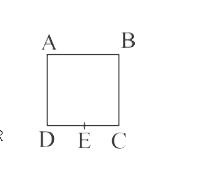ELECTROMERIC EFFECT (+E)
Step by step video & image solution for ELECTROMERIC EFFECT (+E) by Chemistry experts to help you in doubts & scoring excellent marks in Class 11 exams.
Updated on:21/07/2023Similar Questions
Knowledge Check
Some statements are given below:
1. Kharasch effect is only applicable for HI.
2. Wurtz reaction can be used to ascend the alkane series.
3. Ease of elimination of R-X is 1∘>2∘>3∘.
4. Addition of H-X in alkene is an example of positive electromeric effect. Among the above, the correct statement(s) is/areAonly 4Bonly 1 and 2Conly 3 and 4Donly 2 and 4
Photoelectric Effect|Energy Of Photon|Linear Momentum Of Photon|Intensity Of Light|Questions|Experimental Study Of P.E.E By Lenard|Explanation By Einstein|OMR
View SolutionExplain the terms Inductive and Electromeric effects. Which electron displacement effect explains the following correct orders of acidity of the carboxylic acids?
(a) Cl3CCOOH>Cl2CHCOOH>ClCH2COOH
(b) CH3CH2COOH>(CH3)2CHCOOH>(CH3)3C.COOH
View SolutionExplain the terms Inductive and Electromeric effects. Which electron displacement effect explains the following correct orders of acidity of the carboxylic acids?
(a) Cl3CCOOH>Cl2CHCOOH>ClCH2COOH
(b) CH3CH2COOH>(CH3)2CHCOOH>(CH3)3C.COOH
View SolutionElectromeric Effect | Electrophiles and Nucleophiles
View SolutionA wire of resistance R is bent to form a square ABCD as shown in the figure. The effective resistance between E and C is: (E is mid-point of arm CD)

View SolutionII. Read the following passage and answer questions 6-10 that follow :
During organic reactions, a covalent bond between two carbon atoms or carbon atom and some other atom is broken and a new bond is formed. The fission of bonds can be homolytic or heterolytic forming free radicals, carbocations carbanions, carbenes, etc. This also depends upon the displacement, of electron in a bond and is governed by inductive effect, electromeric effect, reasonance and hyperconjugation.
Which of the two CH2=CH− or HC≡C− is a better nucleophile?
View SolutionII. Read the following passage and answer questions 6-10 that follow :
During organic reactions, a covalent bond between two carbon atoms or carbon atom and some other atom is broken and a new bond is formed. The fission of bonds can be homolytic or heterolytic forming free radicals, carbocations carbanions, carbenes, etc. This also depends upon the displacement, of electron in a bond and is governed by inductive effect, electromeric effect, reasonance and hyperconjugation.
Which of the two Ph3C+ or (CH2)3C+ is more stable and why?
View Solution